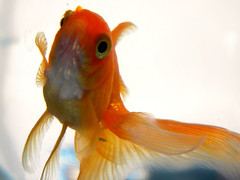Summary
We learn everywhere. A personal learning system doesn't need to be a place. Rather we can envision students using their personal learning system as they go about various learning activities and seeing the results in all the old familiar places.

My work on the Internet of Things has led me to be a big believer in the power of ambience. The Internet of Things is going to lead to a computing experience that is immersive and pervasive. Rather than interacting with a computer or a phone, we'll live inside the computation. Or at least that's how it will feel. Computing will move from being something we do, like a task, to something we experience all around us. In other words, the computing environment will be ambient.
Remarkably, we've been moving the opposite direction with learning.
Since the advent of the Web, more and more learning activities have moved inside the computer. Everything from textbooks to lecture delivery to quizzes has moved onto the tiny screens that seem to dominate our lives. Consequently, when I speak to people about personal learning systems (PLS), the first questions often concern the UI. "What kind of dashboard will it have?" I even labeled one of the primary boxes in my personal learning system diagram the "dashboard."
As we started talking about the PLS and how it would work, I realized that a dashboard was the wrong way to think about it. One of the primary features of the personal learning system is an API that other systems can use. As a result, a lot of what a learner might do in a dashboard in a closed system will happen via the interactions that the learner has with other systems that then use the API.
Some of these interactions are obvious. For example, if an instructor schedules a quiz in Canvas (Instructure's LMS product), then Canvas ought to tell the student's PLS about the new quiz. And once the student completes the quiz, the quiz results and learning objectives (and even the quiz itself depending on instructor preferences) ought to get pushed out to the student's portfolio. The quiz is administered in Canvas since that's the LMS the instructor chose for that class. We shouldn't, indeed we can't, replicate every possible learning activity in the PLS. That's not its job.
We can easily imagine and LMS telling the PLS about a quiz and results via an API. But how does the student know the quiz was scheduled? And where is the student notified of results?
Your first thought might be the PLS dashboard, but I don't think most of us are looking for another place to check for things to do or get messages. The PLS ought to just use the systems the student already has.
The initial version of the PLS that we build will have a calendar server that is available via the PLS API. Regardless of how the LMS tells the PLS about an upcoming event, the student will see it in whatever calendar tool they already use because they'll be able to link the calendar tool on their phone or desktop to their personal API.
Similarly, notifications ought to come to the learner by whatever channel they choose. We have a separate NotifyMe project that we're building at BYU. Students give permission to senders and choose the channel for delivery of messages from a specific sender. Senders queue messages for delivery via and OAuth-moderated API. Students can revoke permission to send at any time. Channel types include email, SMS, dead-letter drop, and even things like Twitter and Facebook. We're planning to fold this capability into the PLS.
Browser extensions, mobile apps, etextbook readers, Slack integrations, the student's domain, and any other tool students use, could be considered part of the student's learning environment and thus something that should be talking to the PLS.
Thinking outside the box a little, I've asked the group that works on BYU's tech classrooms to consider how a classroom might be part of the LMS so that the classroom is configured based on the needs of the faculty member teaching the class. You could extend this idea to the PLS as well. Why shouldn't the classroom write to the class member's PLS? That way the classroom, already part of the student's learning environment, is also integrated with the PLS.
Even functions that probably are part of the PLS, like planning, don't necessarily just have a dashboard. There may be some default set of screens or an app where learners plan their personal syllabus. But because there's an API this function might be farmed out in other tools as well. For example, the student's learning plan may be influenced or even controlled (based on their goals, age, etc.) from systems used by counselors, HR departments, and other advisors.
A PLS shouldn't be one more place learners need to go, but rather something that hooks to everything else they do. Sure, there will be configuration screens, but since most learning happens ambiently, the PLS should respect that and be as unobtrusive as possible while still doing all it can to help people learn.




